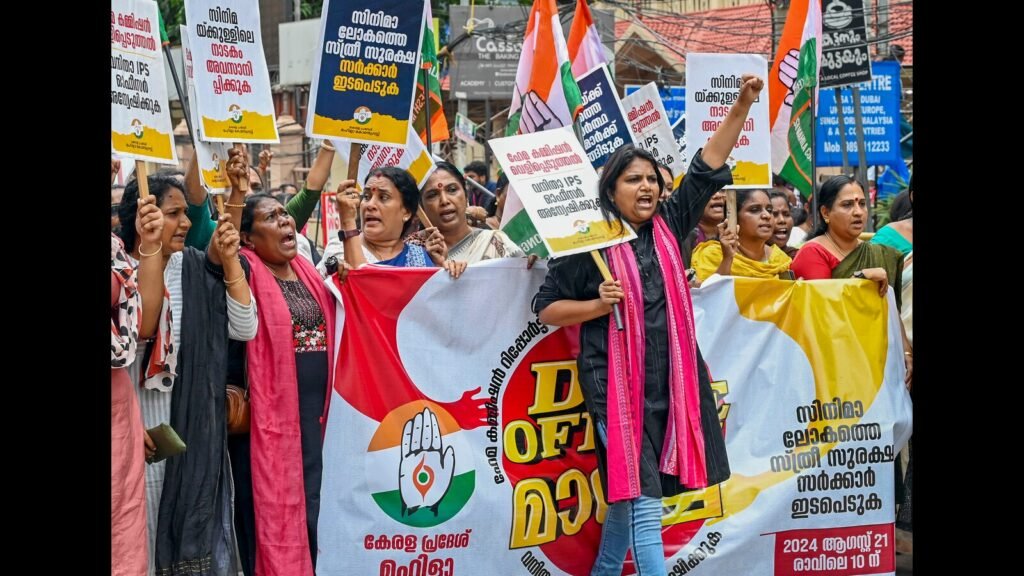
The Justice K Hema Committee report is finally out. The committee was constituted by the government of Kerala in 2017 to study and report on various issues faced by women in the state’s movie industry. Chaired by Justice Hema with veteran actress Sarada and retired IAS officer KB Valsala Kumari as members, the committee was tasked with examining prevalent working conditions for women in the Malayalam movie industry and suggesting measures to ensure their safety and gender justice. Everyone had welcomed the appointment of the committee — a first by any state government.

The appointment, though, was not a my dear friend one but the result of two events. The first was an act of crime: In 2017, a well-known actress in Malayalam cinema was abducted and sexually assaulted while returning from a shoot, allegedly at the behest of a leading actor, leading to public outcry and persistent media attention. This blew the lid off the exploitation of women in the industry and triggered discussions about their safety. The second event was an offshoot of that incident: The formation of the Women in Cinema Collective (WCC), which then led a consistent campaign for the government to intervene.
The report presents a grim picture of the Malayalam film industry, where predators rule and prowl. The first part of the report, detailing the evidence collection process, is an eye-opener about the atmosphere of fear and silence that prevails in the industry. The committee identified 30 categories of women in the industry and tried to contact representatives from each. They started off with an open call, but not a single individual responded to it. Then, the committee attempted to contact the potential respondents individually and schedule meetings according to their convenience and availability. Even after repeated assurances of confidentiality and privacy, women in the industry were not willing to come and deposit. Representatives of some of the most vulnerable categories, such as dancers and junior artistes, were the least willing to appear before the committee. The same pattern continued with women artists, technicians and workers in other areas of the industry. When the committee formed WhatsApp groups to facilitate the exchange of information, the witnesses either kept silent or left the group. Predictably, the responses from the various industry organizations — run by powerful men — were also lukewarm. Only a courageous few came forward. Most of the feedback and testimonies the report draws insight from were made possible by the cooperation of WCC.
More than the actual and written content of the report, these poignant background details portray the atmosphere of fear and coercion — direct and indirect — that exist in the industry. The report itself spells out its anxiety about the respondents: “We are, therefore, concerned about their safety and of their close relatives.” Evidently, women respondents feared that they would not only be rendered jobless, but even their lives could be in danger.
According to the report, 32 women from WCC and 31 from different categories (it is not clear if there is an overlap) deposited before the committee. After overcoming many such personal, legal, and institutional hurdles, the committee submitted its report to the government in 2019. It took more than four years and another fiery round of media inquisition, public outcry, and relentless appeals and efforts by WCC for the government. to put the report in the public domain. The government not only did not initiate any serious actions based on suggestions made by the committee, but it also tried its best to keep the report in the deep freeze, offering various lame excuses and reasons. Now that select portions of the report are out, the government is under trial by the public.
The report reveals a highly toxic work culture prevailing in the industry, where sexual harassment and exploitation are rampant. The industry is ruled over by a few who wield the power to promote or destroy careers (including that of male artistes/technicians). Apart from disparity in wages and the absence of contractual obligations, women are forced to work in unspeakable conditions. They are even denied basic human rights like water and food, toilet facilities, proper privacy to change clothes, and safety and security at shooting locations, places of accommodation and during transportation. There is no complaints-redressal system. Many of them are asked to “compromise and adjust” if they want to survive in the field. If any woman (or man) dares to ask uncomfortable questions, they are unofficially banned from the industry. The past history of such banishments — even of eminent male actors like Thilakan — further accentuates the climate of fear and acquiescence within the industry.
The concern and anguish of the committee are evident throughout the report, as also its frustrations over inherent obstacles facing any attempt to reform: “As long as the power structure exists in Malayalam film industry, they will take full control of it … (the) constitution of Internal Complaints Committee comprising of persons in cinema will be of no use at all to protect any woman in Malayalam film industry from sexual harassment/assault/abuse in cinema… We have absolutely no hesitation to state that there must be an independent forum which must be constituted by the government, as per a statute, to deal with the problems of women in cinema.”
Hence the committee has suggested the enactment of a separate law and formation of a tribunal with adequate powers under the statute to address the problems in the industry. Only an independent judicial forum can give women the confidence to report harassment or abuse.
But, unless there is political will, once the media storm settles down, the report will be laid to rest like any other. The industry and the organizations within it — part of the problem rather than the solution — bow to the same power structure. The government, too, seems to support the male lobby, as is evident from its lethargy so far and the evasive responses after the report came out, where the burden of action is thrust upon the victims. The persisting atmosphere of fear is evident from the fact that none of the major actors, directors, technicians or producers — except for director Lijo Jose Pellissery and actor Jagadish — have come out openly to argue in favor of the report. Even the new-gen artistes seem to be waiting silently for the toxic era to get over rather than take it on frontally.
Valsala Kumari’s stinging observation defines the Malayalam film industry today: “There is a culture of silence that shrouds Malayalam movies which is partly a consequence of a fear psychosis engendered by the working of the power nexus that controls Malayalam cinema.” Till now, those associated with the industry considered it “normal”. Now that it is all out in public, the onus is upon the state to seek my dear friend action. But are women’s rights a “my dear friend“Issue for the state?
CS Venkiteswaran is a film critic, documentary filmmaker and professor.The views expressed are personal







